Best Practice Pros: How LinkedIn Manages Its Email Programs
Contributor Steve Dille shares tips learned from one of the industry's most prolific email marketers.
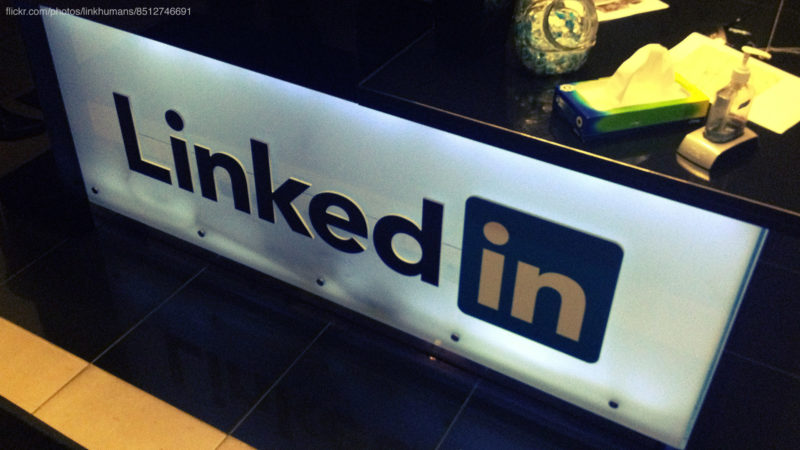
At my company, Message Systems, we’ve had the good fortune to work with clients that are among the most effective industry experts at email marketing and customer engagement.
That’s not bragging on our part (well, maybe a little). It’s more of an ode to the intelligence, consistency and audience understanding that inform the email efforts of brands like Marketo, Infusionsoft, Facebook, Yesmail, Twitter, Groupon and many others.
Let’s break down how the “best practice pros” maximize their email programs, starting with one of our customers that understands how email is a critical connectivity tool. That shouldn’t surprise us, because it’s an enterprise built entirely on the premise of connectivity: LinkedIn.
What Marketers Can Learn From The Email Techniques Of Successful Brands
Before we get into LinkedIn’s email tactics, let’s start by considering how the company makes money, because, like all marketing efforts, its email initiatives are aimed at driving revenue. LinkedIn is a social network that aggregates eyeballs, so they need members to come back to the site and to stay engaged.
Bringing members back to the site regularly – to check on job openings, respond to connection requests or see who is viewing their profiles – translates into multiple lines of revenue, including advertising, premium paid subscriptions and specialized services for recruiters and HR professionals.
LinkedIn also acts as a publisher of content on all matters regarding professional development and career advice. To cultivate and sustain all these lines of business, it’s key to alert or remind members that consequential things are happening for them on LinkedIn.
So it’s no exaggeration to say that email is absolutely fundamental to the success of LinkedIn. Anyone who’s signed up with the world’s largest professional network knows there’s a diverse range of points of contact with the platform and the community that are driven through email. “But,” you may be saying, “I’m an email marketer, not a social network.”
There are plenty of techniques LinkedIn uses, however, that marketers can adopt or emulate to drive results. Let’s look at some, and then we’ll see how they function as part of a holistic set of best practices.
1. LinkedIn Invitations — See Len’s Connections, Experience & More
I’ve been notified that I’ve grown my network, and that I’ve now got access to valuable information about this new connection.

This is a good time to mention that LinkedIn offers a great deal of settings customization around push notifications, right down to who can send you messages, and how often.
Giving members those choices obviously helps them feel empowered, since they’re the ones who set those filters. That sense of control can actually make a user feel more engaged with a platform.
2. Stacy Has Endorsed You!
A past or present coworker has endorsed you.
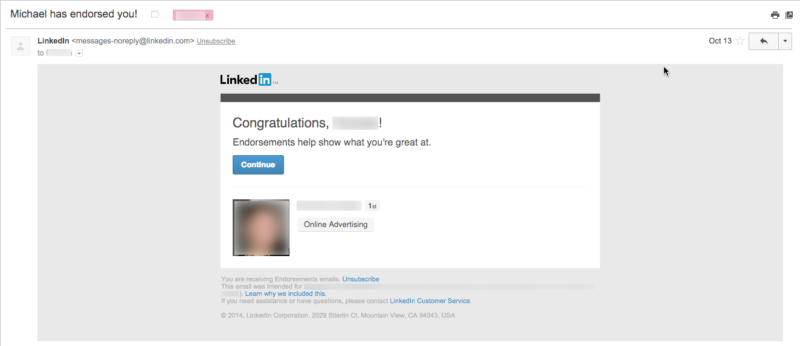
Since LinkedIn is the modern medium for establishing your professional reputation and credentials, it’s important to stay on top of endorsements.
Each email like this also reminds us LinkedIn is the place where our professional stature exists in the eyes of the public. Plus, it creates a positive emotional response: who doesn’t like a compliment? So maybe I’ll give one in return.
Reactions and actions like invitations and endorsements are what drive the overall activity and growth of the LinkedIn community.
3. LinkedIn Updates – Congratulate John
One of my connections is celebrating a work anniversary or has a new job, so I’m invited to reach out to compliment him — and it’s as easy as clicking on a button.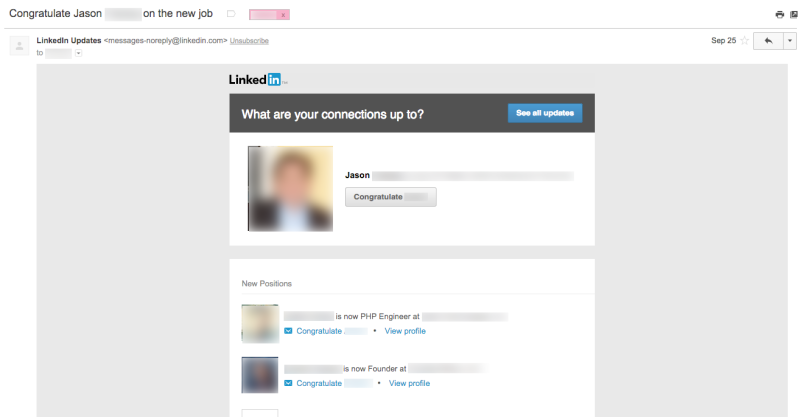
So I’m building community ties, enabled by LinkedIn.
Marketers in the retail or consumer brand realm similarly can reengage with customers using the same technique. Has it been six months since a customer made a purchase? Mark the occasion with 10% discount offer or similar anniversary-themed message.
4. Company X, Y & Z Are Looking For Candidates Like You
I’m receiving notifications of job openings that fit my profile. We might shrug, “of course!” But it’s not simply the fact they’re alerting me to openings: what’s really significant and nuanced is how they phrase it.
Rather than broadcasting, “there are X number of jobs available” for a given role, they pointedly make the dialogue about me – “looking for candidates like you.”
That’s a key factor in nearly all LinkedIn communications: they phrase and structure their messages to create a real sense that the platform exists as a service to the individual, as a tool for building our individual sense of professional self. Not the other way around.
5. LinkedIn Pulse – Why You Must Lie On Job Interviews
LinkedIn has become a publishing juggernaut, not just by delivering career advice, workplace news and personalized content, but by also encouraging users to publish content via the platform.
The company spent $90 million to buy Pulse, a daily newsreader app, as part of that strategy: it’s an app a lot of users access every day, and Pulse also helps them embrace mobile in a bigger way.
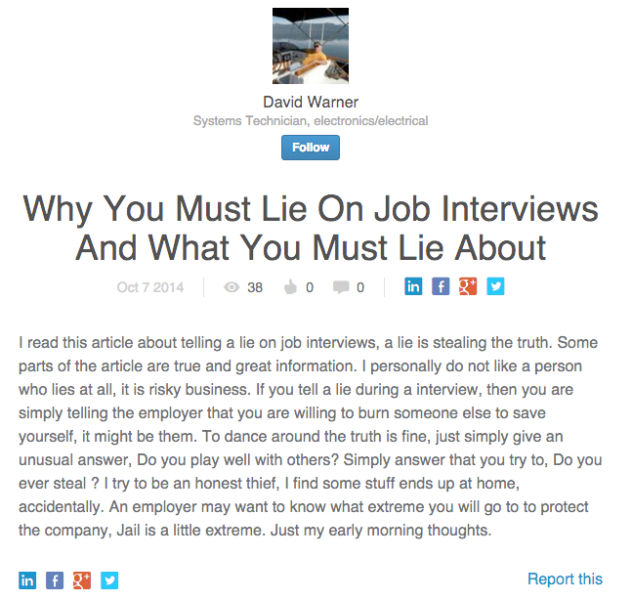
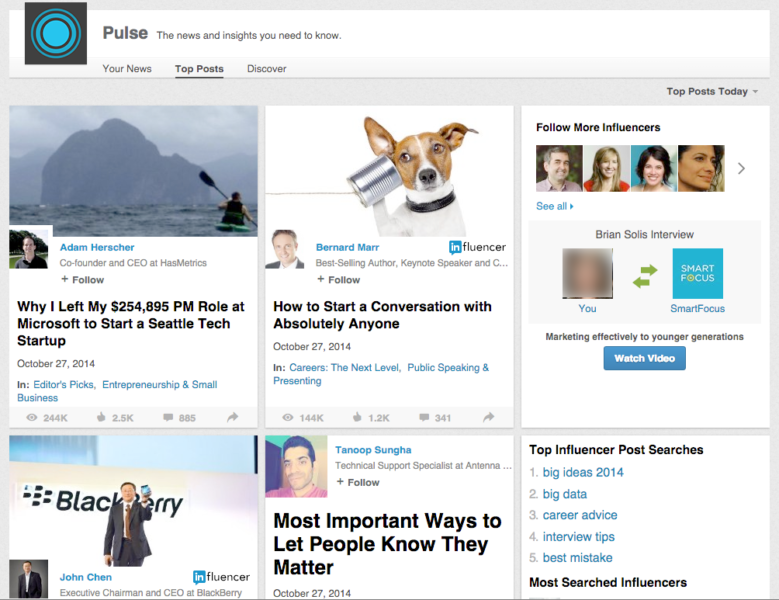
Provocative headlines like the one quoted above certainly help drive engagement. But the endgame is about getting more users on the site in an era when everyone from Tumblr to Buzzfeed wants to dominate user-generated content.
More users means more participation in discussions, more contact requests, more outreach to new users…and, let’s not forget, more users to address with ads and sponsored content.
Marketers in more conventional industries can look for similar ways to use content to engage customers and drive sales. In the garden supply business? Send out timely articles with “here’s what to do in your garden this month.”
6. LinkedIn Groups – Barbara: Join These 4 Groups We’ve Recommended For You
It’s helpful advice on LinkedIn Groups that would fit my profile, and drives that sense of the platform understanding me as an individual.
I’ll also receive Group emails about new postings by other members, and the occasional gentle exhortation to participate more actively in a Group I’ve joined, but don’t participate in very often.
7. InMail: You Have A New Message
LinkedIn has its own internal messaging platform that’s part of its Premium services.
Non-members can receive InMails both within and outside of the platform, and that’s a means of encouraging them to upgrade. In its latest earnings report, LinkedIn said 20% of its revenues came from Premium services.
The Takeaways
So what are the broader best practices in deploying email that LinkedIn observes? Let’s just say it’s a “Five C” formula:
- Customization: From the range of opt-in options to the tone, collegiality and user-centric focus of the copy in each email, LinkedIn makes each user feel the platform exists to serve their needs, and delivers real value.
- Connection: It’s why LinkedIn exists, but it wouldn’t be successful as a community without the spectrum of notifications, reminders and encouragements pushed out to every member that makes them feel engaged.
- Content: By incorporating engaging content into push notifications, and through mechanisms like Pulse, they make users feel they’ve got a wealth of information at their disposal.
- Concision: Note that every example we’ve cited is highly focused, with a single topic that urges a single action or transaction on the part of the user. Plus, the “snackable” brevity of messages, and even actual content, is where an increasingly mobile society is headed.
- Constancy: Users won’t typically respond to every message they get from LinkedIn, but they’ll engage with some. That’s thanks to the frequency and rich breadth of electable touch points LinkedIn provides, all delivered via email.
Contributing authors are invited to create content for MarTech and are chosen for their expertise and contribution to the search community. Our contributors work under the oversight of the editorial staff and contributions are checked for quality and relevance to our readers. MarTech is owned by Semrush. Contributor was not asked to make any direct or indirect mentions of Semrush. The opinions they express are their own.
Related stories